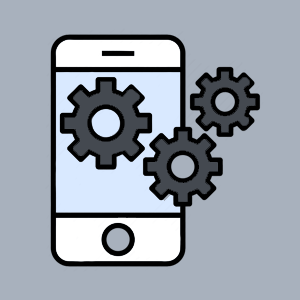 Mobile application development services continue to evolve and delivering a seamless and responsive user experience is paramount. Users demand fast and efficient apps that consume minimal resources while providing a wide range of features. To meet these expectations, developers must employ effective strategies to optimize mobile app performance. In this article, we will explore key techniques and best practices that can enhance the speed, responsiveness, and overall efficiency of mobile applications.
Mobile application development services continue to evolve and delivering a seamless and responsive user experience is paramount. Users demand fast and efficient apps that consume minimal resources while providing a wide range of features. To meet these expectations, developers must employ effective strategies to optimize mobile app performance. In this article, we will explore key techniques and best practices that can enhance the speed, responsiveness, and overall efficiency of mobile applications.
Efficient Coding Practices
- Optimize algorithms: Choose algorithms that are well-suited for specific tasks, as inefficient algorithms can significantly impact performance.
- Minimize resource consumption: Be mindful of CPU and memory usage by avoiding unnecessary computations and optimizing data structures.
- Code profiling: Use profiling tools to identify bottlenecks in the code and address performance-critical sections.
Image and Resource Optimization
- Compressed images: Utilize image compression techniques to reduce file sizes without compromising visual quality. Tools like ImageOptim or TinyPNG can help achieve this.
- Lazy loading: Implement lazy loading for images and other resources to load content only when it’s needed, reducing initial load times.
- Resource bundling: Bundle and minimize CSS, JavaScript, and other resources to decrease the number of server requests and improve load times.
- Image sprites: Combine small images into a single sprite to minimize server requests, especially beneficial for icons and small graphics.
Network Optimization
- Minimize API calls: Reduce the number of API calls by combining requests or fetching only essential data. Caching mechanisms can also help in avoiding redundant calls.
- Content Delivery Networks (CDNs): Leverage CDNs to distribute static assets geographically, reducing latency and accelerating content delivery to users across the globe.
- Asynchronous requests: Implement asynchronous programming to prevent network operations from blocking the main thread, enhancing overall app responsiveness.
- WebSocket integration: Utilize WebSocket technology for real-time communication, reducing the need for continuous polling and optimizing data exchange.
Memory Management
- Garbage collection: Optimize garbage collection routines to minimize disruptions and reduce memory leaks, which can lead to degraded app performance over time.
- Object pooling: Reuse objects whenever possible instead of creating new ones, as excessive object creation and destruction can strain memory management.
- Memory profiling: Regularly profile the app’s memory usage to identify and address memory-intensive areas, ensuring optimal performance.
UI/UX Optimization
- Simplify UI elements: Streamline the user interface by reducing unnecessary elements and focusing on essential features, improving both visual appeal and performance.
- Efficient layouts: Optimize layout structures to minimize rendering times and consider using the GPU for graphics-intensive operations.
- Implementing a responsive design: Ensure that the app is compatible with various screen sizes and resolutions to provide a consistent user experience across different devices.
- Gesture optimizations: Optimize gesture recognition to ensure swift and accurate user interactions, enhancing the overall feel of the app.
Background Processes and Services
- Optimize background tasks: Minimize the impact of background processes on foreground activities to prevent slowdowns during user interactions.
- Background service management: Prioritize and manage background services efficiently, allowing the app to allocate resources judiciously.
- Job scheduling: Implement intelligent job scheduling to batch background tasks, reducing the frequency of wakeups and conserving resources.
Battery Efficiency
- Power-aware coding: Develop energy-efficient code by minimizing CPU usage and utilizing system APIs to manage power consumption.
- Background processing: Limit background processes that consume unnecessary power, contributing to prolonged battery life.
- Battery optimization APIs: Leverage platform-specific APIs to manage and optimize battery consumption, ensuring a positive impact on the user’s device.
Regular Performance Testing
- Performance testing tools: Utilize tools like Android Profiler, Xcode Instruments, or third-party solutions to regularly assess app performance and identify areas for improvement.
- Real-device testing: Test the app on actual devices to simulate real-world scenarios, uncovering performance issues that may not be apparent in emulators.
- User feedback analysis: Actively seek and analyze user feedback to address performance concerns, ensuring continuous improvement and user satisfaction.
Conclusion
In the competitive realm of mobile applications, optimizing performance is not just a recommendation but a necessity. By incorporating these strategies into the development process, app developers can create products that not only meet user expectations but also outshine competitors in terms of speed, responsiveness, and resource efficiency. As technology continues to advance, staying vigilant about performance optimization will be crucial for ensuring sustained success in the dynamic mobile app landscape.
